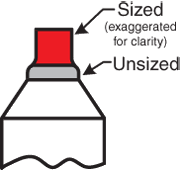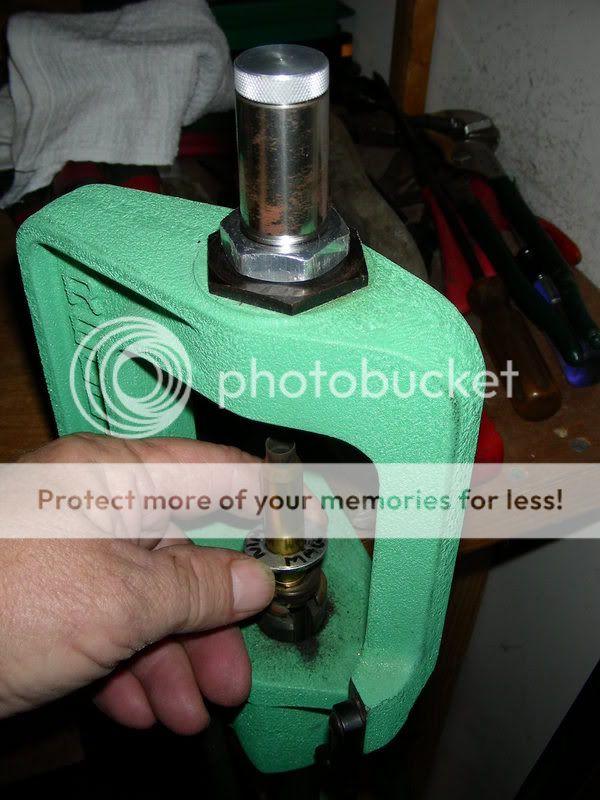Mike
Last I knew there are only two commercial bump dies. One only bumps and one sizes and bumps, so which commercial die are you recommending everyone use as 98% of these guys are using commercial dies only?
So you have custom bump dies made that do not touch the body? Interstesting, but expensive when same thing is available commercially now, IF it only bumps the shoulder.
Plus I saw nothing stating that you have to control the bump to .0001 to .0015 or less in order to keep from pushing out the body shoulder junction and getting a failure to chamber while using a true shoulder bump only die that does not touch the body anywhere. Anything over that and you will get a hard to chamber in a shoulder bump only and it is possible even in FL die if you push too far back like the instructions often say on how to adjust. I have found that it really requires a custom bump guage as the Hornady set is hard to get accurate measurements most of the time.
Many guys are not capable of making that measurement accurately so how do you recommend they control setback at that body junction if using only a bump die?
As for the attributes of partial NS, once again any standard FL bushing die does the same except for the Neil Jones which have a full length neck and bump bushing built into one.
Expanding mandrels are a well known trick to maintain uniformity in the necks and a lot of LR shooters have been doing that for years. We have also been using pin guages +- .0005 to measure exact variance and seaters with pressue readings while seating bullets. As far as I and everyone else has seen, that is the only way to truely measure neck tension during the seating, anything else is just a WAG. Even that is not agreed as 100% accurate by some.
Your method sounds like you are trying to control tension in the NS with a load cell by changing the NS depths? Now if NS only elimates work hardening in the neck as compared to FL sizing as you claimed, why is that even necessary?
Why attempt to control neck tension if NS only eliminates the problem as you claim?
when you look at what you say works, in reality I fail to see how it is practical for 98% of the loads shot here. You say you have to keep them below SAAMI max in order to stop springback. As to you not get springback each and every time a round is fired, I disagree that you are not getting springback unless you have found a way to redefine the law of physics. Even 40,000 PSI will cause a brass case to expand and springback. That is undisputable in any ballistic lab or reference book for anyone to see. Plus a 6.5 WSM has a max SAAMI of 65K PSI so pretty **** sure, you are getting springback and work hardening inthe body and neck too whether you know it or not.
Must be why you have to control NS depth to control non existant variance in neck tension.
Plus most loads here at at SAAMI max at least I would bet if you put a strain guage on them. We have smiths telling them load until bolt stiffens up or locks and then back up 2 grains.
It is amazing that every and I mean every SR and LR BR shooter who NS only claims they get 4-6 or so reloads only before the "click" of where the case has expanded to hard to open and close and must be set back by FL sizing. Now they are using custom chambers and custom NS dies. that is a well known phenomanon so what are they doing wrong?
So best I can see you are the only shooter known that does not get springback and loads shoot forever without increasing in the body and shoulder. Maybe that is due to well below SAAMI max?
You and I certainly agree that standard FL dies improperly adjusted with normal expanders cause many problems.
I routinely use exanders and a custom honed body die and then NS IF I have a problem with a cartridge/load combo and neck tension. So I totally agree that can be one of the best ways to control variance in neck tension, except I size the body with custom honed body die.
However, all the unfavorable attributes you claim are due to FL sizing, we all know that is simply due to improper adjusted dies and expanders, not correct FL sizing. Proper sized dies and adjusted do not cause case growth and I shoot a lot of wildcats and magnums and have for years (300 WSM, 30 Hart, 300 RUM, 300 Weatherby, 300 Ack Imp, 338, 338 Ack Imp, 338-408 are just some). I can load to max SAAMI (if it even has a SAAMI in most cases and have single digit ES and SD in most cases with max accuracy and long case life.
I have 300 WSM cases loaded to shoot 210s at 2960 FPS (yep, pretty sure that is right at SAAMI max), single digit ES and SD for competition and have over 35 reloadings on them too and still ticking, so I know what I say works for accuracy and case life. I have tried the NS only route and it will bit you IMO.
as for your question is FL sizing better for hunting accuracy? IMO 110 % yes over NS only. IF you FL size with proper adjusted dies you will never get a failure to chamber at the wrong time because the case grew as we routinely seen with NS only in big magnums especially.
Anyway, interesting take and I see now that you are going way over NS only with stock commercial dies which is a key factor.

BH


